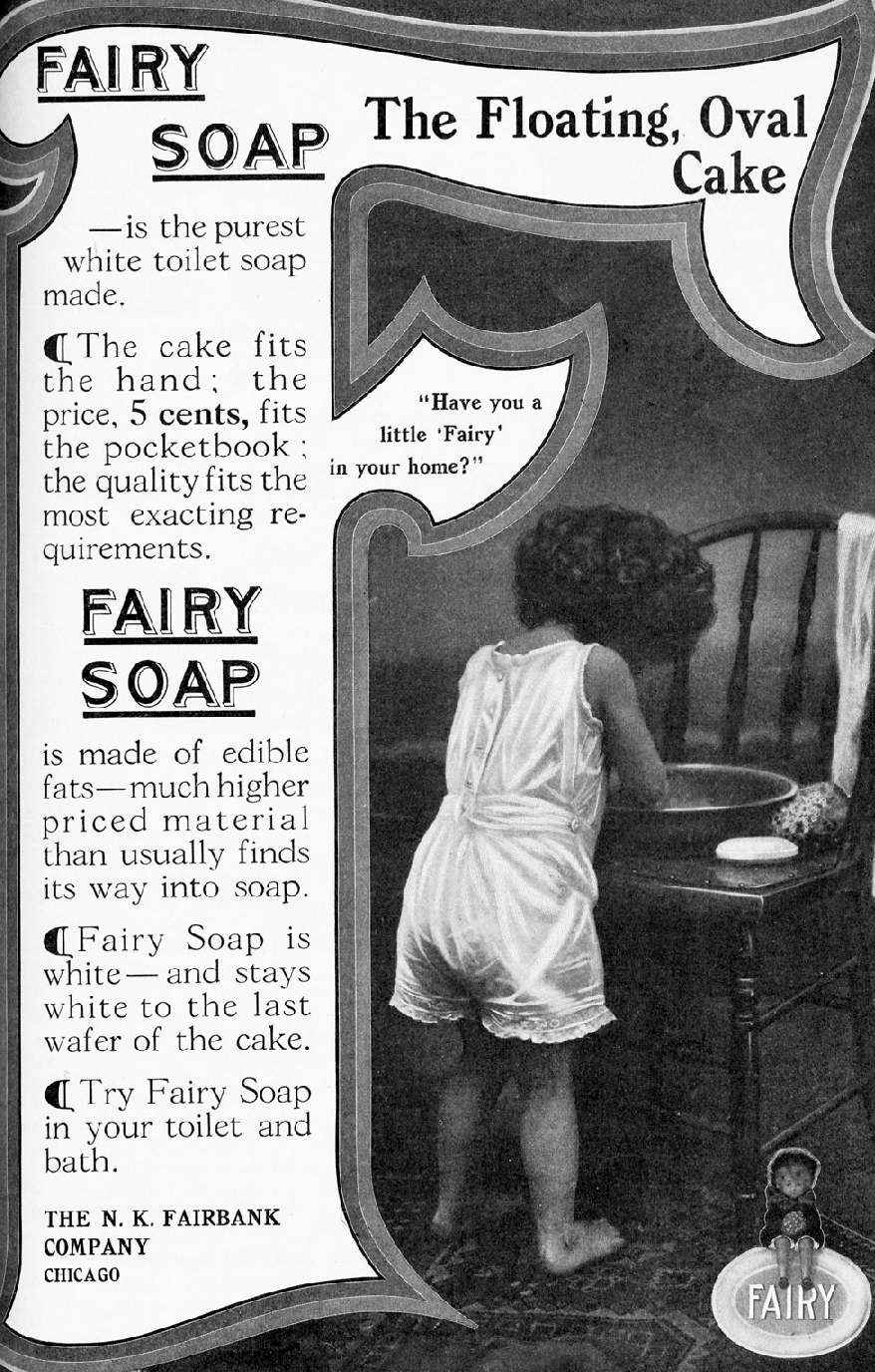
Fairy Soap, 1913

Figure 1.--Nathaniel Kellogg "N.K." Fairbank founded a company , the N.K. Fairbank Co., which manufactured soap and animal and baking products in northern Illinois. Chicago The Company made Fairy soap. Here we have an advertisement in the 'American Magazine'. The advertisment shows a little girl in underwear washing up in the morning. The logo for the brand was a little fairy--which explains the text, "Have you a little 'Fairy' in your home?"'
|
|
Nathaniel Kellogg "N.K." Fairbank (1829-1903) was an important Chicago industrialist. He founded a company , the N.K. Fairbank Co., which manufactured soap and animal and baking products in northern Illinois. Chicaho in the late-19th century became a major American city and one of the important industries was the meat packing industries. Cattle and hogs from the West and Mid-West were processed in Chicago and shipped tonthe expnding indudtrial cities of the Northeast and Mid-Atlantic. The N.K. Fairbank Company in Chicago made Fairy soap. Here we have an advertisement in the American Magazine (April, 1913, p. 7.).
The American Magzine was a popular periodical in the early-20th century which developed a Muckraking tradition. The ad copy reads, "Fair Soap: The floating, oval cake--is the purest white toilet soap made. The cake fits the hand; [Note the use of 'cake' rather than 'bar'.] the price, 5 cents, fits the pocketboo; the quality fits the most exacting requirements. Fairy Soap is made of edible fats--much higher priced materiak than usually finfs its way into soap. --Fairy Sosp is white--and stays white to the kladt wafrer of the cake. --Try Fairy Soap in your toilet and bath." Fairy Soap was was a white soap that floated. In the 19th century that was innovation which avoided the need to have to search in the bathwater for the bar of soap. Its only competitor was Ivory soap made by another American company, Procter and Gamble which had come up with the idea of floating soap in 1878. Gold Brand was another of Fairbank's company's brands. Thomas Hedley & Co. in Newcastle upon Tyne bought the rights to the word 'Fairy' from Fairbanks and launched the what was the first all-purpose soap in 1898. Procter and Gamble Company established its first foreign subsidiary with the acquisition of Thomas Hedley & Co. Ltd (1930). This gave it the rights to the Fairy Brand in Britain and much of Europe. Fairy Soap is still marketed in Britain. The little girl is not in a bathroom, but using a chair and wash pan. I am not sure if that was because many Americans still did not have indoor bathrooms or just to give the child a surface at her height. There is a good depiction of period underwear.
HBC

Navigate the Boys' Historical Clothing Web Site:
[Return to the Main 1910s advertisement page]
[Return to the Main 1913 catalog and advertisement page]
[Return to the Main 20th century advertisement page]
[Introduction]
[Activities]
[Biographies]
[Chronology]
[Cloth and textiles]
[Clothing styles]
[Countries]
[Topics]
[Bibliographies]
[Contributions]
[FAQs]
[Glossaries]
[Images]
[Links]
[Registration]
[Tools]
[Boys' Clothing Home]
Created: 9:42 PM 3/23/2012
Last updated: 9:42 PM 3/23/2012



